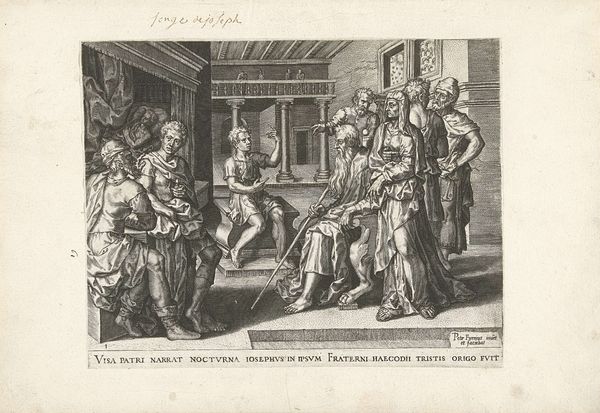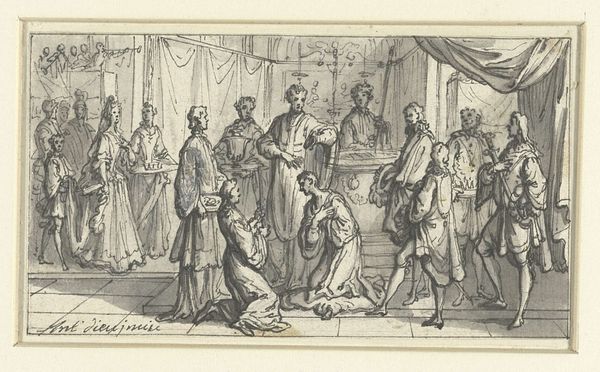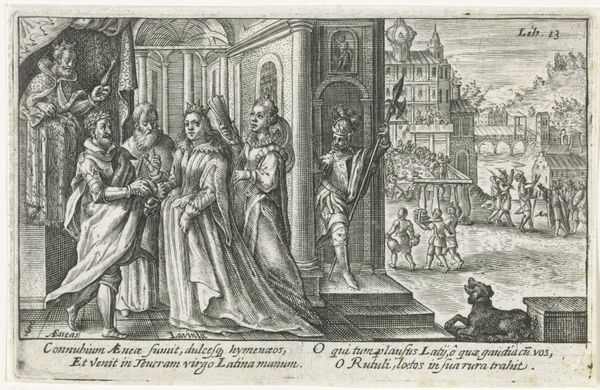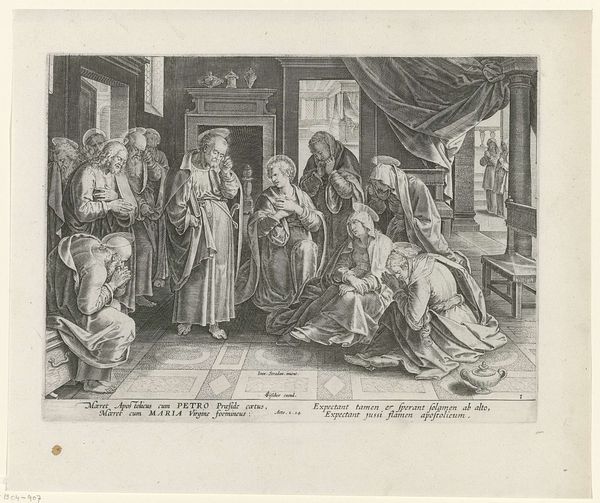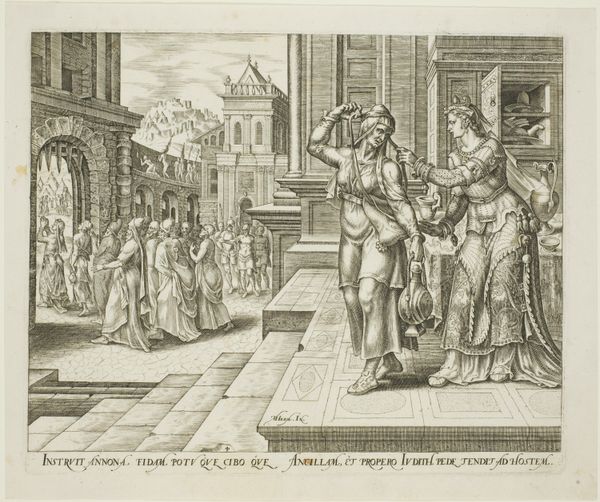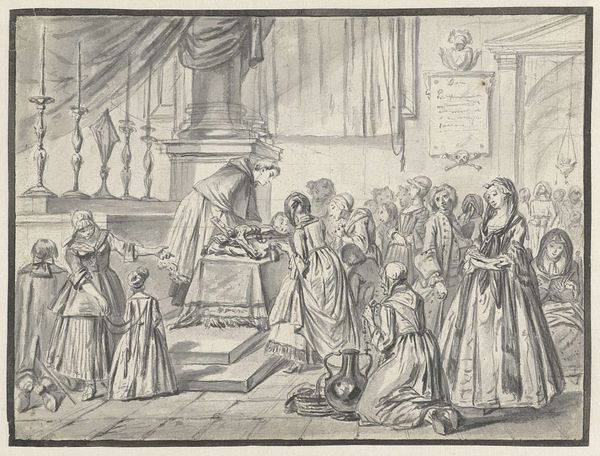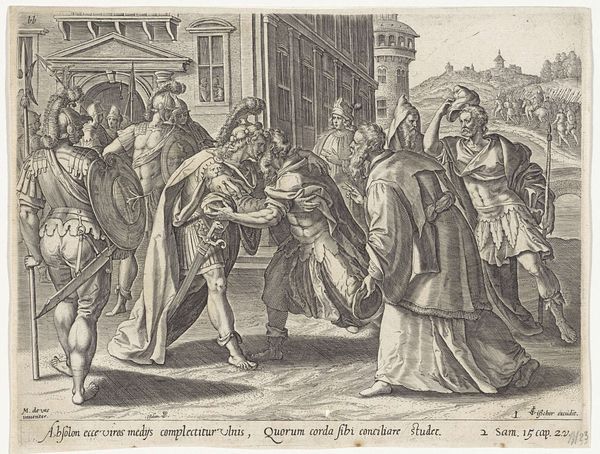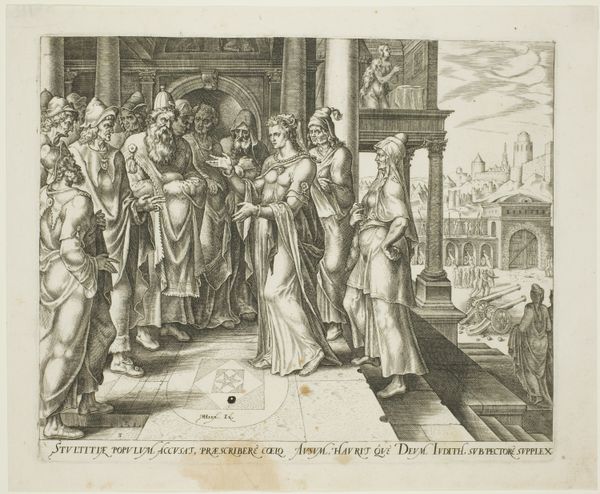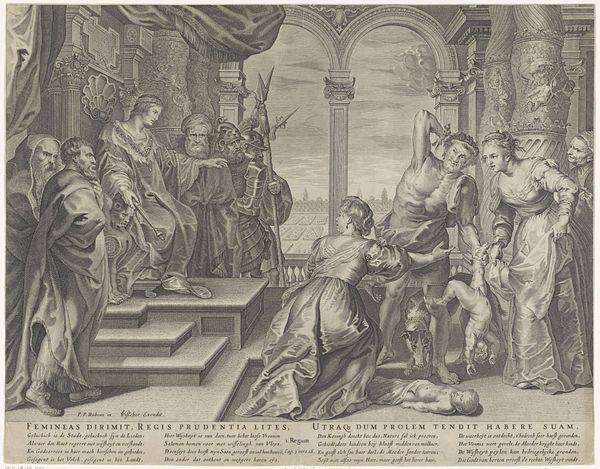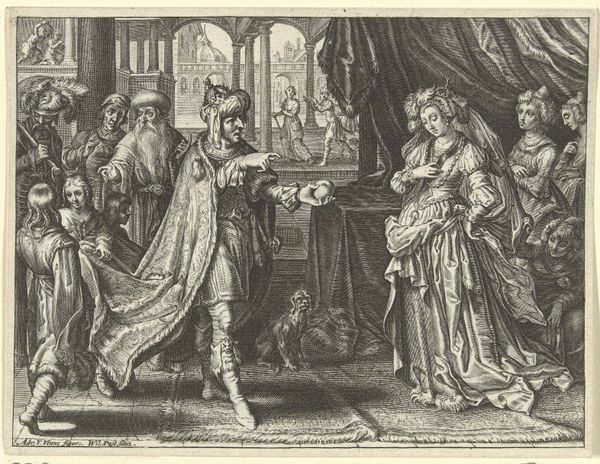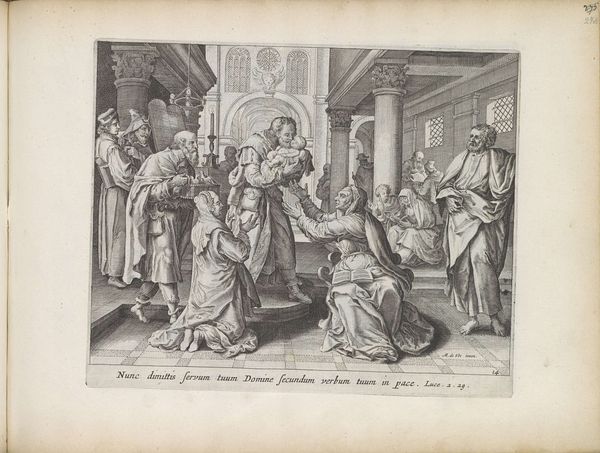
Josef van Arimatea verzoekt Pilatus om het lichaam van Christus 1585 - 1586
0:00
0:00
philipsgalle
Rijksmuseum
Dimensions: height 194 mm, width 264 mm
Copyright: Rijks Museum: Open Domain
Curator: This engraving, "Josef van Arimatea verzoekt Pilatus om het lichaam van Christus," which translates to Joseph of Arimathea asking Pilate for the body of Christ, was created by Philips Galle between 1585 and 1586. It’s currently held here at the Rijksmuseum. Editor: It has a solemn, almost stark feel to it. The detail achieved through engraving is really striking. The rigid, formal architecture contrasts with the fluid, almost pleading gestures of the figures. Curator: Absolutely. Galle was a master printmaker and publisher, and this work demonstrates the influence of academic art and the Baroque style that was emerging at the time. Think about the Counter-Reformation and how artists were trying to connect with viewers on an emotional level, emphasizing biblical narratives. How do we read this power dynamic depicted between Joseph, who seeks compassion, versus Pilate? Editor: Right. Pilate's ambivalence is so palpable. He almost seems detached, even as he presides over this monumental request. It really brings to mind contemporary conversations around the intersection of faith and power, specifically how political figures grapple with moral decisions, especially when there is religious implication for an already oppressed and persecuted group. Curator: That’s a very insightful connection. Consider too that engravings like this played a vital role in disseminating imagery across Europe. Galle's workshop was incredibly prolific; these images were consumed, copied, and adapted, impacting how biblical stories were visualized and understood by diverse audiences. This engraving wasn't just art; it was a tool of cultural influence, a reinforcement of social expectations, especially concerning religion and politics. Editor: And we see this artistic reinforcement play out even today, just on different media platforms. By bringing light to works such as these, we further invite folks to critically reflect upon how our culture evolved based upon these visual narratives. Curator: Precisely. This single engraving offers a portal into understanding the art, the culture and the complicated sociopolitical backdrop of the 16th century, themes which continue to hold meaning and presence today. Editor: It's fascinating to see how such old engravings offer such fresh takes if only we adjust the angle from which we view them!
Comments
No comments
Be the first to comment and join the conversation on the ultimate creative platform.

